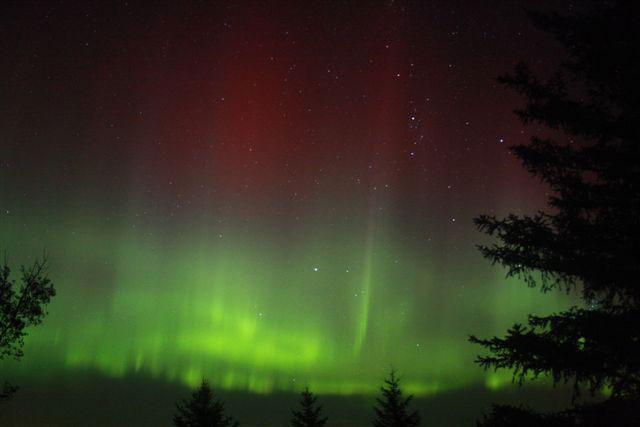TORONTO – Were you lucky enough to catch the northern lights over the past few weeks?

If not, don’t fret: You’ll have a better chance in the coming months.
GALLERY: Northern lights across Canada Aug. 26-28, 2014
Believe it or not, the northern lights, or aurora borealis, has seasons of its own. And good news: we’re heading towards one.
“The good aurora seasons tend to be a little bit after the equinox: October, November and April, May,” said Dean Pesnell, a project scientist for NASA’s Solar Dynamics Observatory.
READ MORE: How solar storms could leave us in the dark
The reason for the season is Earth’s tilt.
The sun produces an everlasting out-blasting of particles called a solar wind. To get a good display of northern lights, that wind needs to match up just right with the Earth’s magnetosphere.

Pesnell explained it like this: “It’s kind of like when you’re in a car, and you’d like to merge with traffic: If you pick your spot and accelerate to the right speed and merge into traffic, everybody’s happy. But if you come along and you’re going too slow, then you can’t join very effectively. And if you’re going too fast you can’t, either.”
Northern Lights Timelapse – Nov 9, 2013 from Richard Gottardo on Vimeo.
What makes this upcoming season even more appealing is that we’re in what scientists call a solar maximum.
Every 11 years or so the sun – a bubbling, charged ball of gas – goes through a period when solar activity is high. That could include sunspots, solar flares, or coronal mass ejections (CME). Sunspots produce solar flares. CMEs, similar to solar flares, eject billions of tons of particles into space that race toward Earth, sometimes within hours.
The downside is that, though we’re in maximum – in Solar Cycle 24 – it’s been a very quiet maximum.
“You have to have something happening in your maximum,” Pesnell said. “We’re probably on the downside now of the solar maximum, but during this time of the solar cycle, the sun produces long-lived active regions, although we’re not seeing good examples yet.”
Pesnell is referring to coronal holes. These holes are areas of the sun’s corona – a region around the sun that extends more than a million kilometers from its surface – that are less dense than the surrounding areas. These open areas of the magnetic field allow plasma and particles to stream out. When these holes face us, the particles get swept up into our magnetosphere, funnelling in towards the poles.
Sometimes these coronal holes produce high-speed streams of particles, which means that we see more auroras more frequently.
READ MORE: WATCH: NASA telescope captures gigantic solar eruption
But the real key to observing the northern lights is the auroral oval – like a doughnut that sits over the poles.
If a large number of particles hit the magnetosphere, the oval swells and extends farther south, meaning that people at more southerly latitudes, such as the northern United States, get to see the magnificent light show.
For us here in Canada, we’re in a pretty good spot to view the northern lights. Those in light-polluted cities or in southern Ontario may have a harder time, but all you need to do is find out when there’s a good chance to see them and then head somewhere as far north and dark as you can.
And, of course, keep your eyes to the sky.


















Comments